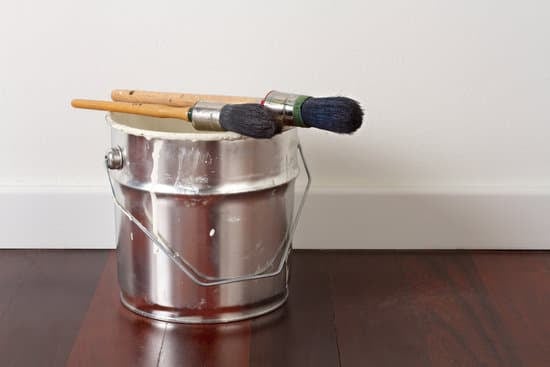Are you wondering how to fund home improvements? Home improvements are not just about making your living space more aesthetically pleasing; they can also increase the value of your property and make it more comfortable for you and your family. In this article, we will explore the importance of home improvements and the benefits they can bring to a property. We will also discuss different methods of funding home improvements, including personal savings, home equity loans, and government programs.
Investing in home improvements is an essential part of homeownership. Not only does it enhance the overall appearance and functionality of a property, but it can also increase its market value. Whether you are planning to sell your home in the future or simply want to enjoy a better living environment, making necessary upgrades can significantly impact your investment.
Identifying which areas of your home need improvement and creating a budget for the project is crucial. Additionally, understanding the financing options available is essential for ensuring that your home improvement goals are achievable. In the following sections, we will delve into different funding methods, including personal savings, home equity loans, government programs, and cost-saving strategies. By the end of this article, you will have a clearer understanding of how to fund your home improvements effectively.
Assessing Your Home Improvement Needs
When considering home improvements, it’s essential to assess the areas of your home that are in need of attention and create a budget for the project. Identifying which aspects of your property require improvement will allow you to prioritize tasks and allocate funds accordingly. Here are some steps to take when assessing your home improvement needs and creating a budget:
- Conduct a thorough inspection: Walk through your home and make note of any areas that require repairs or upgrades. This may include outdated appliances, worn-out flooring, leaky faucets, or peeling paint.
- Prioritize the improvements: Once you’ve identified the areas in need of attention, prioritize them based on their urgency and impact on your daily life. For example, a malfunctioning HVAC system might take precedence over cosmetic upgrades like new curtains or throw pillows.
- Create a budget: After prioritizing your home improvement needs, establish a budget for each project. Research the average costs of labor and materials for each task to ensure that your budget is realistic.
As you assess your home improvement needs and create a budget for the project, it’s important to be realistic about what you can afford. Be sure to consider not only the cost of materials and labor but also any unexpected expenses that may arise during the renovation process. By carefully evaluating your home improvement needs and creating an accurate budget, you’ll be better equipped to plan for financing options such as personal savings or home improvement loans.
Ultimately, understanding how to fund home improvements begins with accurately assessing your needs and creating a comprehensive budget for the project. This will allow you to approach financing options with confidence and make informed decisions about how best to fund your home improvement projects.
Exploring Financing Options
When it comes to funding home improvements, there are various options available for homeowners to consider. From tapping into personal savings to exploring home equity loans and home improvement loans, understanding the different methods of financing can help individuals make informed decisions about their renovation projects.
Personal Savings
Using personal savings is one of the most straightforward ways to fund home improvements. By leveraging funds that have already been set aside for future use, homeowners can avoid taking on additional debt. However, it’s important to carefully consider the impact of withdrawing from personal savings and ensure that there are still emergency funds available after the renovation project is completed.
Home Equity Loans
Another way to fund home improvements is through a home equity loan, which allows homeowners to borrow against the value of their property. This type of loan typically offers lower interest rates compared to other forms of borrowing, making it an attractive option for individuals with substantial equity in their homes. However, it’s crucial to understand the potential risks associated with using a home as collateral for a loan.
Home Improvement Loans
Home improvement loans are specifically designed to finance renovation projects and can be obtained from various financial institutions. These loans often come with fixed or variable interest rates and can be used for a wide range of home improvement purposes. It’s essential for homeowners to compare different loan options and terms before deciding on the most suitable one for their needs.
By understanding these various methods of funding home improvements, individuals can make informed choices when it comes to financing their renovation projects. Whether utilizing personal savings, considering a home equity loan, or exploring dedicated home improvement loans, each option has its own advantages and considerations that should be carefully evaluated before making a decision on how to fund home improvements.
Understanding Home Equity Loans
When it comes to funding home improvements, one option to consider is a home equity loan. This type of loan allows homeowners to borrow money using the equity in their home as collateral. Here are some key points to understand about home equity loans:
- How Home Equity Loans Work: Home equity loans allow homeowners to borrow a lump sum of money, which is repaid over a fixed term with a fixed interest rate. The amount that can be borrowed is based on the difference between the current market value of the home and the amount still owed on the mortgage.
- Pros of Home Equity Loans: One advantage of home equity loans is that they typically have lower interest rates compared to other types of financing. Additionally, the interest paid on these loans may be tax-deductible, making them a cost-effective option for funding home improvements.
- Cons of Home Equity Loans: On the downside, using your home as collateral means that you risk losing your property if you default on the loan. Also, taking out a home equity loan adds to your overall debt load and can affect your credit score if not managed carefully.
Before deciding on whether a home equity loan is right for funding your home improvement project, it’s important to carefully consider your financial situation and consult with a financial advisor or lending institution for guidance on how to fund home improvements effectively.
Researching Government Programs
When looking for ways on how to fund home improvements, it’s important to consider the various government programs and grants available to homeowners. One such program is the FHA Title I Property Improvement Loan Program, which is designed to help homeowners finance permanent home improvements and renovations. These loans can be used for both large and small projects, making them a valuable resource for those in need of financial assistance for their home improvement needs.
Understanding the FHA Title I Property Improvement Loan Program
The FHA Title I Property Improvement Loan Program is offered by the Federal Housing Administration (FHA) and is specifically tailored for homeowners who need funds for home improvements but may not qualify for traditional home equity loans. These loans do not require equity in the property as collateral, making them accessible to a wider range of homeowners.
They can be used for a variety of purposes, including repairing roof damage, upgrading plumbing or electrical systems, or making the home more energy-efficient.
Eligibility and Application Process
To qualify for the FHA Title I Property Improvement Loan Program, homeowners must meet certain eligibility criteria set by the FHA. This may include having a stable income, a good credit history, and no outstanding judgments or liens against their property. The application process typically involves submitting detailed plans and cost estimates for the proposed improvements, as well as providing documentation to demonstrate financial stability.
Benefits of Government Programs
Government programs like the FHA Title I Property Improvement Loan Program offer several benefits to homeowners seeking funding for their home improvement projects. These may include lower interest rates compared to traditional loans, longer repayment terms, and access to funds without requiring equity in the property as collateral.
Additionally, these programs often have less stringent credit requirements, making them an attractive option for those with less-than-perfect credit scores. By researching and taking advantage of these government programs and grants, homeowners can secure the funding they need to make necessary improvements to their properties.
Utilizing Home Improvement Loans
Home improvement loans can be a great option for homeowners looking to fund renovation projects. These loans are specifically designed to help individuals finance the cost of improvements to their property, whether it’s a kitchen remodel, bathroom upgrade, or adding an extension to the home. Understanding the process of applying for and using home improvement loans, as well as securing favorable terms and rates, is crucial in making the most out of this financing option.
One important factor to consider when utilizing home improvement loans is the interest rate. A lower interest rate can significantly reduce the overall cost of the loan. To secure favorable terms and rates, it’s essential to have a good credit score and a stable income. Lenders typically offer better terms to borrowers with a low debt-to-income ratio and a history of responsible financial behavior.
Additionally, borrowers should compare offers from different lenders to find the most competitive rates and terms. It’s also advisable to explore government-backed loan programs that may offer more affordable options for funding home improvements.
When considering how to fund home improvements, it’s important for homeowners to assess their financial situation before committing to any loan. Understanding the process of applying for and utilizing home improvement loans can help individuals make informed decisions about the best way to finance their renovation projects.
| Benefit | Requirement |
|---|---|
| Lower overall cost | Good credit score |
| Competitive rates | Stable income |
| Affordable options | Government-backed loan programs |
Saving Strategies for Home Improvements
Home improvement projects can be expensive, but there are several ways to save money on these endeavors. One of the most effective strategies is to do it yourself (DIY) when possible. Many tasks like painting, installing new fixtures, or even minor repairs can be done without professional help. By taking on these tasks yourself, you can save a significant amount of money on labor costs.
Another cost-saving strategy is to hunt for bargains when purchasing materials and supplies for your home improvement project. Look for sales, discounts, and clearance items at home improvement stores and online retailers. You may also consider buying gently used or refurbished items such as appliances or furniture to save even more money.
In addition to DIY and bargain hunting, another way to save money on home improvements is by repurposing or upcycling existing materials in your home. For example, instead of buying new cabinets for your kitchen remodel, consider refinishing or painting the ones you already have. Repurposing existing materials not only saves money but also reduces waste and helps the environment.
These strategies can help you fund your home improvement project without breaking the bank. Whether you’re renovating a single room or tackling a whole-house remodel, implementing these cost-saving techniques can make a big difference in the overall budget.
| Category | Details |
|---|---|
| DIY | Do it yourself whenever possible to save on labor costs. |
| Bargain Hunting | Look for sales, discounts, and clearance items when purchasing materials. |
| Repurposing/Upcycling | Consider repurposing existing materials in your home to reduce costs. |
Conclusion
In conclusion, funding home improvements is an important aspect of maintaining and enhancing the value of your property. By investing in home improvements, homeowners can create a more comfortable living environment, increase the resale value of their homes, and potentially lower their energy costs.
Assessing your home improvement needs and creating a budget for the project is the first step in the process. Once you have determined what improvements are necessary and how much they will cost, it’s time to explore different financing options.
Personal savings, home equity loans, and home improvement loans are some of the most common methods for funding home improvements. Each option has its own advantages and considerations, so it’s crucial to thoroughly research and compare them before making a decision.
Furthermore, researching government programs and grants available for home improvements can also provide additional financial support. Government initiatives such as the FHA Title I Property Improvement Loan Program can offer valuable assistance to homeowners looking to make upgrades to their properties.
Ultimately, taking advantage of these funding options requires careful planning and consideration. Understanding the pros and cons of each method, as well as seeking out cost-saving strategies during the improvement process – such as DIY techniques and bargain hunting – can help maximize your investment in home improvements.
By being proactive in securing favorable terms and rates for financing options, homeowners can successfully fund their desired home improvements while minimizing financial strain. In summary, with proper research and planning, homeowners can take actionable steps towards funding their desired home improvements effectively and affordably.
Frequently Asked Questions
What Is the 30 Rule for Renovations?
The 30 rule for renovations suggests that you should aim to spend no more than 30% of your home’s current value on renovations. This is to ensure that you don’t overcapitalize on your property.
Should I Borrow Money to Renovate?
Whether or not you should borrow money to renovate depends on your financial situation and the potential return on investment from the renovations. It’s essential to carefully consider the costs and benefits before making a decision.
Can I Borrow From My IRA for Home Improvement?
It is possible to borrow from your IRA for home improvement under certain circumstances, such as being a first-time homebuyer or using the funds for specific expenses like purchasing, building, or rebuilding a first home. However, there are limitations and tax implications to consider before doing so.

I’m thrilled to have you here as a part of the Remodeling Top community. This is where my journey as an architect and remodeling enthusiast intersects with your passion for transforming houses into dream homes.





